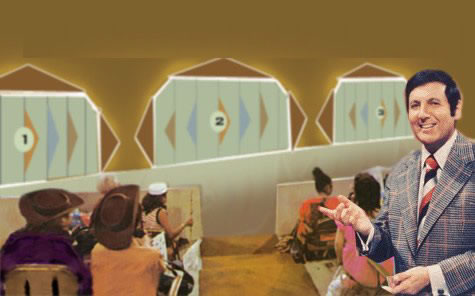| A popular television game show (Let's Make a Deal from the 1960s and 1970s) featured a new car hidden behind one of three doors, selected at random. Behind the other two doors were less appealing prizes (e.g., goats!). When a contestant played the game, they was asked to pick one of the three doors. If the contestant picked the correct door, they won the car! |
 |
However, there was a twist! Once a contestant picked a door, instead of showing the prize behind that door, Monty would reveal a goat behind one of the other two doors. Then he gave the contestant a choice - stick with his or her original door choice or switch to the remaining unopened door.
For example, suppose you pick Door 1 and then Monty shows you that there is a goat behind Door 3. Now you have to decide, do you want to move forward with Door 1 or now switch to Door 2, or does it not matter?
Assuming there is no set pattern to where the game show puts the car initially, this game is an example of a random process: Although the outcome for an individual game is not known in advance, we expect to see a very predictable pattern in the results if you play this game many, many times.
So let's play the game!

